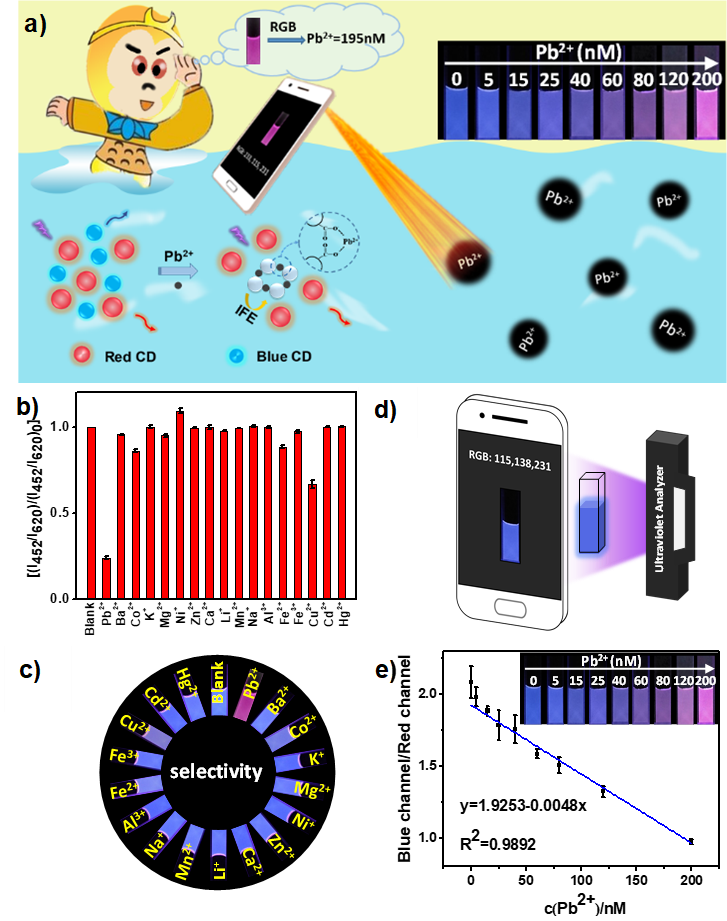Among the metal ions, lead is considered as one of the most toxic elements, because it damages human health and pollutes the environment. Traditional methods of detecting lead ions, including stripping voltammetry (SV), atomic absorption spectrometry (AAS), atomic emission spectrometry (AES) and inductively coupled plasma mass spectrometry (ICP–MS), can complete the sensitive and selective analysis of the amount of Pb2+ in water sample. However, the application of these technologies is limited by the high cost of instruments, the need for professional operation and the long testing period.
A Chinese research team from Institute of Intelligent Machines (IIM), Hefei Institutes of Physical Science developed an effective colorimetric fluorescent detection of lead ions in water, and achieved visual, real-time and semi-quantitative detection by printing the paper strip with fluorescence probe solution and a smartphone application (Color recognizer, Xiyi Technology).
This work was done by Jiang Changlong and his colleagues with Institute of Intelligent Machines (IIM), Hefei Institutes of Physical Science. It was published in Analytical Chemistry.
In order to achieve semi-quantitative visual detection of lead ions, the team prepared colorimetric fluorescent probe by the mixture of blue carbon dots (BCDs,) and red carbon dots (RCDs) with a fixed fluorescence intensity ratio. As the amount of Pb2+ increases, the decrease of the blue fluorescence intensity makes the luminescence color obvious from blue to red, which can be conveniently distinguished using a smartphone under a UV lamp. By combining the smartphone and fluorescent paper strips, the instantaneous semi-quantitative detection of metal ions can be realized.
According to the study, the detection limits of the fluorescent probe solution were 2.89 nM and 35.26 nM respectively by using luminescence spectrometer and the smartphone application, which are much lower than permissible limit of Pb2+ (10 mg·L-1) for drinking water (WHO). Using a smartphone identified the RGB values of fluorescent paper strips, on-site and semi-quantitative detection of lead ions in water can be realized, the entire detection process can be completed in 5 minutes.
This work is financially supported by National Natural Science Foundation of China (Nos, 21876175, 21671052, 21605144, 21806168), National Basic Research Program of China (2015CB932002) and Key Research and Development Program of Anhui Province (1804a07020103).
Link to the paper: Semi-Quantitative Visual Detection of Lead Ions with Smartphone via Colorimetric Paper-based Analytical Device
Article Link:https://pubs.acs.org/doi/10.1021/acs.analchem.9b02297

Figure: a) Schematic illustration of visual detection of lead ions in water; b) The selectivity of colorimetric fluorescent probes to detect lead ions; c) The fluorescent images corresponding to the selectivity of detect lead ions (photographed under 365 nm UV light); d) Schematic drawing for the detection of Pb2+ using a smartphone; e) The plot of fluorescence probe solution color change (blue channel/red channel) versus concentration of Pb2+ (insets show that photos were taken with a smartphone under a 365 nm UV lamp).
